History
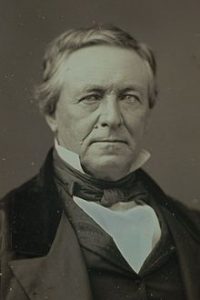 I think that many of us have thought about a hidden treasure…probably as kids, but maybe as adults too. In fact, with the number of metal detectors sold every year, maybe there are just as many adults looking for hidden treasure as kids.
I think that many of us have thought about a hidden treasure…probably as kids, but maybe as adults too. In fact, with the number of metal detectors sold every year, maybe there are just as many adults looking for hidden treasure as kids.
Dr John Marsh was born June 5, 1799 in South Danvers, Massachusetts. In college at Harvard, he had intended to study ministry, but changed his mind and received his bachelors degree in medicine. He then studied medicine with a Boston doctor. He then decided to move to California, and became an early pioneer and settle in Alta, California. He was also the first Harvard graduate, the first to practice medicine there. He knew Hebrew, Latin and Greek, and was the first to compile a dictionary of the Sioux language. He became one of the wealthiest ranchers in California, and was one of the most influential men in the establishment of California statehood.
The Reverend William W Smith introduced Marsh to Abigail “Abby” Smith Tuck, a schoolteacher from New England, who also served as principal at a girls school in San Jose. After a brief two-week courtship, they were married on June 24, 1851. Soon after the wedding, the couple moved into the old adobe. On 12 March 1852, she gave birth to a daughter they 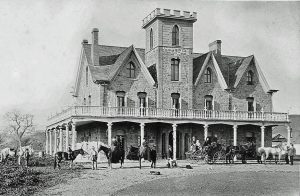 named Alice Frances. Shortly thereafter, Marsh set out to build his family a home. Abby had picked the spot for their home. The home that was nestled in the foothills of Mount Diablo. The home was located next to a creek that was later named Marsh Creek after the doctor. While the home was stunning, the cost of building it did not exceed $20,000.
named Alice Frances. Shortly thereafter, Marsh set out to build his family a home. Abby had picked the spot for their home. The home that was nestled in the foothills of Mount Diablo. The home was located next to a creek that was later named Marsh Creek after the doctor. While the home was stunning, the cost of building it did not exceed $20,000.
Marsh was not only a doctor, but also a rancher, and was very successful, even though he was usually paid for medical services in the currency of the day…cowhides and tallow. Marsh might have been a bit of an eccentric, or maybe he just didn’t trust banks. Whatever the case may be, he was known to bury his money in the foothills near his home. Abby died in 1855, and maybe that was what set Marsh to burying the money. I don’t think anyone knows. It is thought that Marsh buried about $40,000 in gold coins in the area, but the money  has never been found. On September 24, 1856, while coming home from Martinez, Marsh was murdered. It happened on the road between Pacheco and Martinez. Riding by, he was ambushed and murdered by three of his vaquero employees over a dispute about their wages. Two of the killers were found ten years later and brought to trial. One man turned state’s evidence and was released without trial. The other was convicted and sentenced to life in prison, though he was pardoned 25 years later. The third man was never caught. A California Historical Landmark #722 plaque still marks the site of the murder. John and Abigail Marsh are buried in Mountain View Cemetery, in Oakland, California.
has never been found. On September 24, 1856, while coming home from Martinez, Marsh was murdered. It happened on the road between Pacheco and Martinez. Riding by, he was ambushed and murdered by three of his vaquero employees over a dispute about their wages. Two of the killers were found ten years later and brought to trial. One man turned state’s evidence and was released without trial. The other was convicted and sentenced to life in prison, though he was pardoned 25 years later. The third man was never caught. A California Historical Landmark #722 plaque still marks the site of the murder. John and Abigail Marsh are buried in Mountain View Cemetery, in Oakland, California.

 Finding ourselves in the middle of a global pandemic has placed many Americans, and in fact, most Americans, as well as the people of other countries, in a world suddenly changed. Will it be forever changed? Well, that remains to be seen. What we do know is that life as we knew it…just days ago for some of us, is nothing like it was before. We find ourselves being told to “stay at home” unless we happen to be one of the essential workers…doctors, nurses, CNAs and other hospital workers, grocery store employees, restaurant workers (who can only handle pick-up or delivery orders, because the dining rooms are closed), first responders (police, fire, and ambulance), necessary city or town workers (including, of course, government officials), mail carriers, truck drivers and delivery people. The rest of us are supposed to stay home accept for getting food, groceries, medicine, gasoline, medical appointments, and outdoor exercise…all while practicing social distancing (staying 6 feet away from other people). That, of course, means no hugging, hand shaking, high fives, elbow bumps or even foot taps, which had prior become the new normal. Many people are wearing masks and of course, washing their hands and using hand sanitizer, and not touching their faces.
Finding ourselves in the middle of a global pandemic has placed many Americans, and in fact, most Americans, as well as the people of other countries, in a world suddenly changed. Will it be forever changed? Well, that remains to be seen. What we do know is that life as we knew it…just days ago for some of us, is nothing like it was before. We find ourselves being told to “stay at home” unless we happen to be one of the essential workers…doctors, nurses, CNAs and other hospital workers, grocery store employees, restaurant workers (who can only handle pick-up or delivery orders, because the dining rooms are closed), first responders (police, fire, and ambulance), necessary city or town workers (including, of course, government officials), mail carriers, truck drivers and delivery people. The rest of us are supposed to stay home accept for getting food, groceries, medicine, gasoline, medical appointments, and outdoor exercise…all while practicing social distancing (staying 6 feet away from other people). That, of course, means no hugging, hand shaking, high fives, elbow bumps or even foot taps, which had prior become the new normal. Many people are wearing masks and of course, washing their hands and using hand sanitizer, and not touching their faces.

Many of these things are common sense, and some are things we have done for a while now, but other things are so new and very foreign to us. We are a mobile society, and staying home is very foreign to us. Schools and daycares are closed, making it difficult for the essential workers with children to get to work. Parents who never considered home-schooling, are forced to do so, as many schools will not open for the remainder of the school year. Non-essential workers find themselves working from home (if their jobs can feasibly allow that). The streets are almost deserted, and we find ourselves wondering if the few people we see out, have a legitimate reason to be out, or if they had simply gone rogue. Normally we care little for the goings on of other people on the street, and we are used to many people going many places. Most of us hardly notice the people around us going about their daily commutes or errands. We were too busy with our own lives to care about what others were doing. Now, however, we find ourselves looking at the people who are out and about, wondering if they really should be more responsible and stay at home.
As pandemics do, this one too shall pass, but what of our country. Will we start to be more caring for others? Will we work to get closer to our families, neighbors, and friends? Will we suddenly know that we can use a lot less of things that we may have been wasteful with before? Will we continue to pray over people and say things like “God Bless America,” or are these things just something we do because we have been caught up in the  moment? Or will we, like so many times before, forget about all this a year from now? It is my hope that we will step up and make some permanent changes in our lives. The people of the earth have maybe been very selfish, thinking only of ourselves and those we care about, but maybe we shouldn’t be that way. Life as we knew it changed with COVID19’s entrance on the world stage. What we do next will determine how history views the generations of people alive today. Will we be viewed as reckless and unfeeling, or will we be viewed as the most amazing generation ever to deal with a global disaster? The outcome really depends on us.
moment? Or will we, like so many times before, forget about all this a year from now? It is my hope that we will step up and make some permanent changes in our lives. The people of the earth have maybe been very selfish, thinking only of ourselves and those we care about, but maybe we shouldn’t be that way. Life as we knew it changed with COVID19’s entrance on the world stage. What we do next will determine how history views the generations of people alive today. Will we be viewed as reckless and unfeeling, or will we be viewed as the most amazing generation ever to deal with a global disaster? The outcome really depends on us.
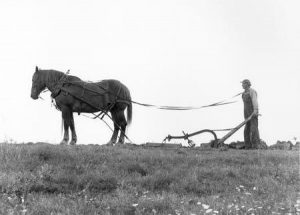 As we head into Spring, the Farmers start planning for the spring planting. In man’s early years, that meant finding a stick to poke a hole in the ground so the seeds could be placed in the hole and covered. While that may have been fine for the small one-family garden, it was ineffective for the large farms we have today. Supplying many people with food, like today’s farmers do, means that plowing and planting has to be more streamlined.
As we head into Spring, the Farmers start planning for the spring planting. In man’s early years, that meant finding a stick to poke a hole in the ground so the seeds could be placed in the hole and covered. While that may have been fine for the small one-family garden, it was ineffective for the large farms we have today. Supplying many people with food, like today’s farmers do, means that plowing and planting has to be more streamlined.
Watching shows like Little House on the Prairie, and others that took in a planting period, most of us have seen the hand plow used by farmers in the Old West. It was hooked up to a horse, and the farmer had to not only follow 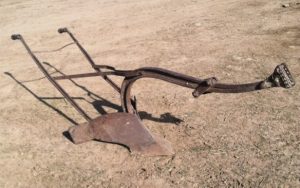 behind the horse, being careful to keep up, but also to force the blade of the plow into the dirt to turn it over. The plow worked, but it was very labor intensive…and in the heat of the day, a man could get heat stroke plowing his field…literally!!
behind the horse, being careful to keep up, but also to force the blade of the plow into the dirt to turn it over. The plow worked, but it was very labor intensive…and in the heat of the day, a man could get heat stroke plowing his field…literally!!
The wheeled plow, which was drawn by oxen at first, but later by horses, made possible the northward spread of European agriculture. Finally, the farmer could sit and let the horse and machine do the work. It was still hot in the mid-day sun, but the work wasn’t so labor intensive. The 18th-century addition of the moldboard, which turned the furrow slice cut by the  plowshare, was an important advance. The black hard-packed soil in the American Midwest in the mid-19th century challenged the strength of the existing plow. That was when American mechanic John Deere invented the all-steel one-piece share and moldboard. The three-wheel sulky plow followed and finally, with the introduction of the gasoline engine the tractor-drawn plow. Further improvements followed until we had the advanced farming equipment we have today. The plow has come a long way, and the work of a farmer has become a little easier, but it is still hard work, and without the farmers we would have serious food shortages. Thank you to all our farmers!! Don’t forget to thank a farmer today.
plowshare, was an important advance. The black hard-packed soil in the American Midwest in the mid-19th century challenged the strength of the existing plow. That was when American mechanic John Deere invented the all-steel one-piece share and moldboard. The three-wheel sulky plow followed and finally, with the introduction of the gasoline engine the tractor-drawn plow. Further improvements followed until we had the advanced farming equipment we have today. The plow has come a long way, and the work of a farmer has become a little easier, but it is still hard work, and without the farmers we would have serious food shortages. Thank you to all our farmers!! Don’t forget to thank a farmer today.
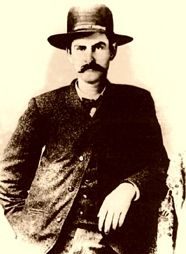 He came from a family of seafaring lawmen in Massachusetts, and a long line of English sailors of the Seven Seas. Nevertheless, David Allen Mather was known as Mysterious Dave, because people weren’t sure if he was a lawman or a killer. Mather was born on August 10, 1851, to Ulysses and Lycia Mather. Mysterious Dave could often be found wearing royal blue and red, as a proud display of his English heritage…even as he got older. Because some of his family members were lawmen in Massachusetts, Mysterious Dave decided that he wanted to become a lawman himself, but he was a small man with square but weak shoulders, dark eyes, and a mustache. Mather was not a talkative man, earning him the nickname of “Mysterious Dave.”
He came from a family of seafaring lawmen in Massachusetts, and a long line of English sailors of the Seven Seas. Nevertheless, David Allen Mather was known as Mysterious Dave, because people weren’t sure if he was a lawman or a killer. Mather was born on August 10, 1851, to Ulysses and Lycia Mather. Mysterious Dave could often be found wearing royal blue and red, as a proud display of his English heritage…even as he got older. Because some of his family members were lawmen in Massachusetts, Mysterious Dave decided that he wanted to become a lawman himself, but he was a small man with square but weak shoulders, dark eyes, and a mustache. Mather was not a talkative man, earning him the nickname of “Mysterious Dave.”
While Mather wanted to be a lawman, he wasn’t always true to his chosen profession. Like so many other lawmen of the Old West, sometimes necessity caused him to operate on both sides of the fence. Sometimes he was on the side of the law, and other times he could be found riding with outlaws. It didn’t instill much confidence in the law. The townspeople might find themselves with out protection, because the local sheriff is part of the gang that is robbing the local bank.
Mather’s parents died before he was 16, so he and his brother, Josiah headed west. By 1873, Mather was cattle rustling in Sharp County, Arkansas. A year later, Mather discovered Dodge City, Kansas, a town he would return to frequently…both as a lawman and an outlaw. He also loved to head into Denver, Colorado, always with twin Colts bulging under his coat, to frequent the saloons there. He was interested in watching the gamblers at the faro, blackjack, and poker tables, but strangely, he never gambled himself.
Mather had made his way to Mobeetie, Texas by 1878, and began hanging out with Wyatt Earp. Before long a suspicious story emerged placing the two men running a con game peddling “gold” bricks to the naïve citizens of Mobeetie. Mather hooked up with outlaw Dutch Henry Born in 1879. Born was the leader of a horse-stealing ring operating in a huge area from Kansas, to eastern Colorado and New Mexico, and the Texas Panhandle. Before long Mather was arrested with Henry Born, but was later released…somehow beating the rap. Next, Mather was picked up for complicity in a train robbery near Las Vegas, New Mexico, but somehow dodged a bullet there too, when he was acquitted. Somehow the people of Las Vegas decided that Mather would make a great Deputy Marshal. Apparently he had mixed emotions on that score, because soon, he became part of the notorious Dodge City Gang that was terrorizing the city of Las Vegas New Mexico. What??? I thought he was supposed to be protecting them!!
On January 22, 1880, T.J. House, James West, John Dorsey, and William Randall terrorizing the town, laughing and looking for trouble. When they entered the Close and Patterson Variety Hall, Marshal Joe Carson asked them to check their guns but they refused. In the ensuing gunfight, Carson was killed immediately, while Deputy “Mysterious” Dave Mather killed Randall and dropped West. John Dorsey, though wounded, and T.J. House managed to escape. The whereabouts of Dorsey and House was learned on February 5. They were at the home of Juan Antonio Dominguez in Buena Vista, thirty miles north of Las Vegas. They formed a posse including J.J. Webb, Dave Rudabaugh, and five other men. They surrounded the home and told the men to surrender. Dorsey and House complied after assurance of protection from the citizens of Las Vegas were given. The assurance wouldn’t mean much, because within hours of the men being placed in the Old Town Jail, local vigilantes charged the jailers, taking the men to the windmill on the Plaza, where they were to be hanged. Mrs Carson opened fire on the men, and the opportunity was lost.
After Marshal Carson’s death, the people decided to appoint Mather as the Las Vegas Marshal, but he couldn’t keep to one side of the law, and soon moved on again after being accused of “promiscuous shooting” in his capacity as marshal. He served a short stint as Assistant Marshal in El Paso, Texas, but an altercation in a brothel caused Mather to be slightly wounded. He decided to return to Dodge City where he was hired as Assistant City Marshal.
By the time Mather returned to Dodge City, gambling, drinking, prostitution, and dance halls, often in open violation of the law, had all but taken over the town. The “Dodge City War” in the spring of 1883 was followed by pressure from the Santa Fe Railroad to clean up the town. David Mather was still at odds with the good people, but accepted the position of Dodge City Assistant Marshal. Before long, he was also the co-owner of the Opera House Saloon on Front Street.
Then a man named Thomas Nixon enter the picture. The city council objected to Mather’s decision to turn the Opera House Saloon into a dance hall and soon passed an ordinance banning all dance houses, mostly because of its prominent downtown location. Still, the council took no action whatsoever against another dance hall owned by Nixon, allegedly because of its remote location. This didn’t set well with Mather, and for several months, he and Nixon battled to put each other out of business. In 1884, the city government replaced Mysterious Dave with Nixon as the Assistant Marshal. With this action, the fight was on. The evening of July 18, 1884 found Nixon firing a gun at Mather, but only sprayed him with a few splinters. Three days later, Mather approached Nixon from behind and fired four bullets into his back, killing him instantly. Mather was later heard to say, “I ought to have killed him six months ago.”
Mather was acquitted of Nixon’s murder, but he killed another man the following year, and was run out of town by Marshal Bill Tilghman. After serving as city marshal in a couple of small towns in Kansas and Nebraska, Mysterious Dave moved on San Francisco, where he took a ship to Vancouver. Some reports say he soon enlisted in the Royal Canadian Mounted Police, proving his prowess by showing what he could do with a pair of six guns and a horse. Little is known about what happened to Mysterious Dave after that. I guess he, like old soldiers, old lawmen, they simply fade away.
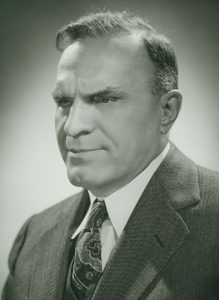 They say that “necessity is the mother of invention,” and never was that more true than for Ralph Teetor. The circumstances of his invention were of overwhelming necessity…to say the least. Teetor was blind, and because of that, he was forced to accept rides to wherever he chose to go. His friend, Harry Lindsay, who didn’t mind driving Teetor around, but who also had a notoriously “jerky accelerator foot.” Teetor couldn’t figure out why, Lindsay couldn’t keep the car at a consistent speed. When you think about it, a car that is being driven in a jerky manner would be a bit scary for a blind passenger, who has no idea why they might be possible stopping suddenly… or even if it just seems like they are stopping suddenly.
They say that “necessity is the mother of invention,” and never was that more true than for Ralph Teetor. The circumstances of his invention were of overwhelming necessity…to say the least. Teetor was blind, and because of that, he was forced to accept rides to wherever he chose to go. His friend, Harry Lindsay, who didn’t mind driving Teetor around, but who also had a notoriously “jerky accelerator foot.” Teetor couldn’t figure out why, Lindsay couldn’t keep the car at a consistent speed. When you think about it, a car that is being driven in a jerky manner would be a bit scary for a blind passenger, who has no idea why they might be possible stopping suddenly… or even if it just seems like they are stopping suddenly.
For Teetor, the possibility of things changing was impossible. He was not going to magically get his sight back, so something else had to change. Teetor was no stranger to the idea of inventing things. At the age of five, he endured a terrible accident, which 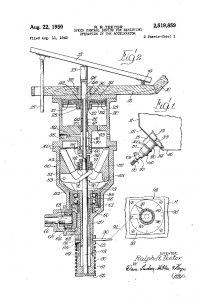 left him in his disabled condition. He was incredibly young age, but Teetor refused to allow an accident to keep him from living a full life. At age 12, he was featured in the December 21, 1902 edition of the New York Herald for building a one-cylinder car to scoot around in his neighborhood. Here is how the Herald described him in 1902: “A constructor of miniature dynamos and other machinery at 10 and thoroughly versed in all that pertains to their operation, and at 12 the builder of an automobile that carries him about the streets of his native town and far out upon the country roads at a speed of from 18 to 25 miles an hour, is the remarkable record of Ralph Teetor of Hagerstown, Indiana.”
left him in his disabled condition. He was incredibly young age, but Teetor refused to allow an accident to keep him from living a full life. At age 12, he was featured in the December 21, 1902 edition of the New York Herald for building a one-cylinder car to scoot around in his neighborhood. Here is how the Herald described him in 1902: “A constructor of miniature dynamos and other machinery at 10 and thoroughly versed in all that pertains to their operation, and at 12 the builder of an automobile that carries him about the streets of his native town and far out upon the country roads at a speed of from 18 to 25 miles an hour, is the remarkable record of Ralph Teetor of Hagerstown, Indiana.”
Teetor set out to solve his problem. He invented what we know today as the automobile cruise control system, which is an outer control loop that “takes over” control of the throttle…a task normally exercised by the driver through the accelerator pedal. Unlike the driver of the vehicle, the cruise control holds the vehicle speed steady at a set value. The invention worked perfectly on the first try, but being a perfectionist, Teetor spent the next decade tinkering with his design. By 1958, he had finally perfected his invention. Nevertheless, Cadillac began 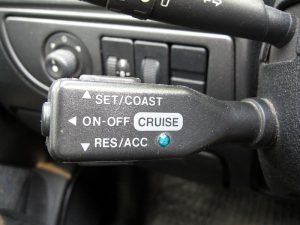 rolling it out in all of their cars by 1950. The only part of his invention that Teetor ever struggled with was the name. At first, the invention was known by “a host of names more suited for the Wiley Coyote: Speedostat, Touchomatic, and Auto-pilot.” Eventually, the designers at Chrysler came up with “cruise control.” It wasn’t flashy, but it was also less likely to be mistaken for “a kitchen appliance.” Teetor decided that sacrifices just had to be made sometimes. So now you know that the cruise control…the gas-conserving savior of long-distance drivers everywhere, actually came from one man’s pet peeve. I would imagine that if you were blind, and being thrown around in your seat because you couldn’t drive yourself, you might be pretty grouchy, too.
rolling it out in all of their cars by 1950. The only part of his invention that Teetor ever struggled with was the name. At first, the invention was known by “a host of names more suited for the Wiley Coyote: Speedostat, Touchomatic, and Auto-pilot.” Eventually, the designers at Chrysler came up with “cruise control.” It wasn’t flashy, but it was also less likely to be mistaken for “a kitchen appliance.” Teetor decided that sacrifices just had to be made sometimes. So now you know that the cruise control…the gas-conserving savior of long-distance drivers everywhere, actually came from one man’s pet peeve. I would imagine that if you were blind, and being thrown around in your seat because you couldn’t drive yourself, you might be pretty grouchy, too.
 Imagine an airplane simply disappearing…without a trace. These days, that scenario seems both far fetched, and yet not so far fetched. After Malaysia Flight 370 went missing and wasn’t found for a long time, the people began to wonder if it had been hijacked and taken to a communist country. Many people are still skeptical concerning the wreckage that was located. Nevertheless, Malaysia Flight 370 was not the first flight to go missing, many planes have gone missing, some never to be seen again. The big shock with the Malaysia flight was that there were so many locators on these planes. We couldn’t figure out how this could happen with so many gadgets to find missing planes.
Imagine an airplane simply disappearing…without a trace. These days, that scenario seems both far fetched, and yet not so far fetched. After Malaysia Flight 370 went missing and wasn’t found for a long time, the people began to wonder if it had been hijacked and taken to a communist country. Many people are still skeptical concerning the wreckage that was located. Nevertheless, Malaysia Flight 370 was not the first flight to go missing, many planes have gone missing, some never to be seen again. The big shock with the Malaysia flight was that there were so many locators on these planes. We couldn’t figure out how this could happen with so many gadgets to find missing planes.
In years gone by, flight locating equipment was not as readily available. For that reason, planes disappearing was more common. On March 16, 1962, one of the strangest disappearances of modern times occurred. Flying Tiger Line Flight 739 still remains a mystery. It is the worst aviation accident in the Lockheed Constellation series. The strange thing was that there was no reported accident involving the flight, and yet the general belief is the plane was involved in an in-flight explosion. This information came from a potential witness on a civilian tanker. Nevertheless, no wreckage, debris, or bodies were ever found, although the search and rescue efforts of the US military were extensive. The frustration must have massive. Looking…but finding no signs of wreckage.
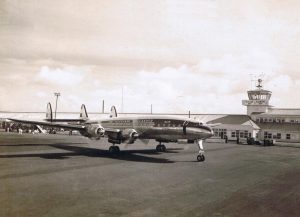 The biggest reason that the lost flight still remains a mystery, is that without wreckage, there was no way to determine probable cause of the accident. The explosion remains the best cause, but there is a conspiracy theory which insists that sabotage could have been in play. Flight 739, an L-1049 Super Constellation, took off from the Travis Air Force Base on the March 16th and went missing in the area of the Aleutian Islands. The Civil Aeronautics Board determined that, based on the tanker’s observations, Flight 739 probably exploded in-flight, though an exact cause could not be determined without examining the remnants of the aircraft. As of this date, flight 739 remains the worst aviation accident involving the Lockheed Constellation series.
The biggest reason that the lost flight still remains a mystery, is that without wreckage, there was no way to determine probable cause of the accident. The explosion remains the best cause, but there is a conspiracy theory which insists that sabotage could have been in play. Flight 739, an L-1049 Super Constellation, took off from the Travis Air Force Base on the March 16th and went missing in the area of the Aleutian Islands. The Civil Aeronautics Board determined that, based on the tanker’s observations, Flight 739 probably exploded in-flight, though an exact cause could not be determined without examining the remnants of the aircraft. As of this date, flight 739 remains the worst aviation accident involving the Lockheed Constellation series.

 Saint Patrick’s Day is usually synonymous with celebrations, parades, green beer at the local pub, and of course the “Wearin’ O The Green,” but this year might be very different. Of course, we all know why that is. The current Coronavirus has found most people taking extraordinary measures to avoid being around large groups of people, in an effort to stop the spread of the virus, which can have serious symptoms in some patients and rather mild symptoms in others. I think people are trying to do what it takes to be safe.
Saint Patrick’s Day is usually synonymous with celebrations, parades, green beer at the local pub, and of course the “Wearin’ O The Green,” but this year might be very different. Of course, we all know why that is. The current Coronavirus has found most people taking extraordinary measures to avoid being around large groups of people, in an effort to stop the spread of the virus, which can have serious symptoms in some patients and rather mild symptoms in others. I think people are trying to do what it takes to be safe.
One of the biggest cancellations is the many Saint Patrick’s Day Parades. Most places don’t want more than 50 people…or 25 people…and even 10 people gathering in public places. Many of the bars and restaurants have  been closed, so that eliminates Saint Patrick’s Day celebrations. Of course, schools and day cares, gyms, hotels and travel industries, casinos, movie theaters, churches, and many businesses, are also closed, so people can’t go to those places to celebrate or even to carry on everyday life. Even the traditional dying or the Chicago River to emerald green for Saint Patrick’s Day has been cancelled. There are places that are open, such as stores, hospitals, and doctors offices, but people are asked to avoid them as much as possible. The idea of a sick person being told to avoid the doctor’s office or hospital is a very strange one. In times past, doctors would not diagnose disease over the phone, but now that is the first line of defense. The medical professionals don’t want people who have the disease to come in and infect other people. In fact, people are told to “quarantine or shelter in place” in an effort to slow the spread of the disease. Testing sites have even become drive-through…a previously unheard-of idea. All of these things have pushed Saint Patrick’s Day to the background of reality.
been closed, so that eliminates Saint Patrick’s Day celebrations. Of course, schools and day cares, gyms, hotels and travel industries, casinos, movie theaters, churches, and many businesses, are also closed, so people can’t go to those places to celebrate or even to carry on everyday life. Even the traditional dying or the Chicago River to emerald green for Saint Patrick’s Day has been cancelled. There are places that are open, such as stores, hospitals, and doctors offices, but people are asked to avoid them as much as possible. The idea of a sick person being told to avoid the doctor’s office or hospital is a very strange one. In times past, doctors would not diagnose disease over the phone, but now that is the first line of defense. The medical professionals don’t want people who have the disease to come in and infect other people. In fact, people are told to “quarantine or shelter in place” in an effort to slow the spread of the disease. Testing sites have even become drive-through…a previously unheard-of idea. All of these things have pushed Saint Patrick’s Day to the background of reality.
Nevertheless, I have seen a number of people who have put their own “Wearin’ O The Green” on line, or on television (for people who are in the news, etc), or just at home with their own families. I realize that this virus has dampened the spirits of many people, but deep down inside, there seems to live a victorious spirit within people. They seem to be refusing to allow this to bring about depression. On this Saint Patrick’s Day, I have seen the Ohio Governor Mike DeWine talking about postponing the Ohio Caucus, while wearing a blue suit, 
 green tie, and green hair dye in his hair. Sure, the best case scenario is to be able to celebrate Saint Patrick’s Day in all of it’s traditions, but the reality of the Coronavirus insists that we do things differently this year. I like that so many people have chosen to celebrate in a social-distancing social media kind of way. I’m glad that people still seem to have a sense of humor, amid the panic. Happy Saint Patrick’s Day to one and all!!
green tie, and green hair dye in his hair. Sure, the best case scenario is to be able to celebrate Saint Patrick’s Day in all of it’s traditions, but the reality of the Coronavirus insists that we do things differently this year. I like that so many people have chosen to celebrate in a social-distancing social media kind of way. I’m glad that people still seem to have a sense of humor, amid the panic. Happy Saint Patrick’s Day to one and all!!
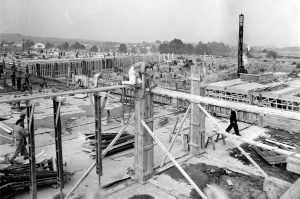
 One of the most unique buildings in the United States is the Pentagon. I’m sure that most people think that it was built the way it was to provide a better level of security for the people working within its walls, but that was not the case at all.
One of the most unique buildings in the United States is the Pentagon. I’m sure that most people think that it was built the way it was to provide a better level of security for the people working within its walls, but that was not the case at all.
The Pentagon was originally planned for a different location, but for reasons unknow, the structure could not be built on that location. The original location was a rather tight space, so in an effort to fit the building in the field that was located between five major roads, the design of an irregular pentagon was chosen. The building couldn’t be very tall due to regulations in the area, and so 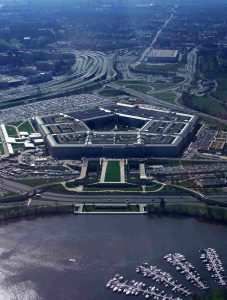 the design was an almost-level irregular pentagon. Still, the building needed to house 40,000 people and have parking for 10,000 vehicles. That is a very tall order, for a short building. In the end, the planned location, was not allowed, and the Pentagon had to be moved.
the design was an almost-level irregular pentagon. Still, the building needed to house 40,000 people and have parking for 10,000 vehicles. That is a very tall order, for a short building. In the end, the planned location, was not allowed, and the Pentagon had to be moved.
Of course, with the location change, it was thought, at first, that the design to be changed too, but everyone involved in the design immediately got mad about the change. The designer had already been paid for his work, and it wasn’t really fair to take the payment back, nor did they want to pay for something they did not use. Finally it was decided to go ahead with the original design, and the result is the well-known, irregular pentagon shape that we are all very familiar with. While the Pentagon is synonymous world-wide with defense, he design had nothing to do with defense at all, but rather it was in an effort to put the building in the space allowed…much like a child putting a square peg in a square hole so that it fits.
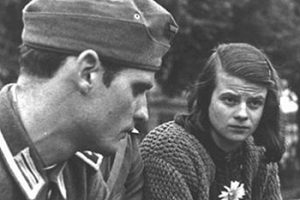
 The White Rose was a non-violent, intellectual resistance group in the Third Reich led by a group of students including Hans and Sophie Scholl. The students attended the University of Munich. Their goal was to promote awareness using an anonymous leaflets and a graffiti campaign that called for active opposition to the Nazi regime. Of course, while the actions were anonymous, the Third Reich had spies everywhere. The activities of The White Rose started in Munich on June 27, 1942, and ended with the arrest of the core group by the Gestapo on February 18, 1943. The core group, as well as other members and supporters of the group who carried on distributing the pamphlets, were sentenced to death or imprisonment in show trials by the Nazi People’s Court (Volksgerichtshof).
The White Rose was a non-violent, intellectual resistance group in the Third Reich led by a group of students including Hans and Sophie Scholl. The students attended the University of Munich. Their goal was to promote awareness using an anonymous leaflets and a graffiti campaign that called for active opposition to the Nazi regime. Of course, while the actions were anonymous, the Third Reich had spies everywhere. The activities of The White Rose started in Munich on June 27, 1942, and ended with the arrest of the core group by the Gestapo on February 18, 1943. The core group, as well as other members and supporters of the group who carried on distributing the pamphlets, were sentenced to death or imprisonment in show trials by the Nazi People’s Court (Volksgerichtshof).
Hans and Sophie Scholl and Christoph Probst were among the members of the core group. They were captured on February 18, 1943. During the trial, Sophie interrupted the judge multiple times, but she was ignored. No defendants were given any opportunity to speak. They had no way to defend themselves, and were found guilty at the “trial.” They were executed by guillotine four days after their arrest, on February 22, 1943. The group had only been active for eight months, they had never committed a violent act, and yet they were put to death. Hitler’s regime considered them more of a threat for pamphlets and paintings, than if the had run around shooting people.
The group wrote, printed, and initially distributed their pamphlets in the greater Munich region. As the movement grew, secret carriers brought copies to other cities, mostly in the southern parts of Germany. The White Rose authored a total of six leaflets, which were multiplied and spread. In all, about 15,000 copies were printed. They denounced the Nazi regime’s crimes and oppression, and called for resistance. They openly 
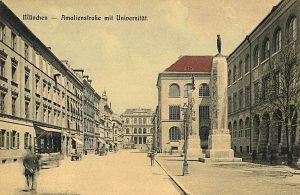 denounced the persecution and mass murder of the Jews, in their second leaflet. By the time of their arrest, the members of the White Rose were just about to establish contacts with other German resistance groups like the Kreisau Circle or the Schulze-Boysen/Harnack group of the Red Orchestra. Today, the White Rose is well known both within Germany and worldwide. Sadly the movement ended almost before it could get started.
denounced the persecution and mass murder of the Jews, in their second leaflet. By the time of their arrest, the members of the White Rose were just about to establish contacts with other German resistance groups like the Kreisau Circle or the Schulze-Boysen/Harnack group of the Red Orchestra. Today, the White Rose is well known both within Germany and worldwide. Sadly the movement ended almost before it could get started.

 With each new story of disaster, pandemic, or even murderous scare tactics, the news media splashes the newspaper, internet, and television with sensationalistic stories of doom and gloom. Yes, these things are serious matters, but sometimes I wonder if the news media are the only ones who are doing well throughout the crisis. It’s not that the news media doesn’t have a job to do so that the people are well informed, but even the doctors are saying that they have far overdone the current news stories. The news media has led people to believe that this is going to get so bad that entire cities are going to be quarantined for extended periods of time. The news reports are so bad, that it has prompted people to run out and buy up every necessity to the point of shortages. Things like toilet paper, hand sanitizer, face masks, disinfecting wipes, and rubbing alcohol are in seriously short supply. People are buying far more than they could possibly us in more than a year. There have even been people who won’t drink Carona beer, because of the similarity to the name of the virus. The insanity is astounding!!
With each new story of disaster, pandemic, or even murderous scare tactics, the news media splashes the newspaper, internet, and television with sensationalistic stories of doom and gloom. Yes, these things are serious matters, but sometimes I wonder if the news media are the only ones who are doing well throughout the crisis. It’s not that the news media doesn’t have a job to do so that the people are well informed, but even the doctors are saying that they have far overdone the current news stories. The news media has led people to believe that this is going to get so bad that entire cities are going to be quarantined for extended periods of time. The news reports are so bad, that it has prompted people to run out and buy up every necessity to the point of shortages. Things like toilet paper, hand sanitizer, face masks, disinfecting wipes, and rubbing alcohol are in seriously short supply. People are buying far more than they could possibly us in more than a year. There have even been people who won’t drink Carona beer, because of the similarity to the name of the virus. The insanity is astounding!!
I’m not saying that people don’t need to know about the situation, but when you turn on the news and all you hear is the fear mongering of the news media. The drama seekers need to set aside the need to “make their entire career” with the latest crisis, and instead give the information needed, in a clear non-dramatic manner so people have the ability to make sensible decisions about their own health. The way the latest media-managed crisis is being handled is like yelling “fire” in a packed event center. Yes, you’ll clear the place out, but lives will be lost in the process.
For some time now, the news media has been throwing out so much fake news that people no longer believe the news media. That is a dangerous place to be, because, like the boy who cried “wolf,” after a while nobody is listening anymore. They already know that the news media is just sensationalizing the story, so it’s probably all a lie anyway. If there ever is a serious crisis, it will arrive before anyone can prepare, because the screaming of the news media into the wind, is no longer being heard. It’s time for the news media to get back to the 
 “honorable,” “fair and balanced,” “we report, you decide” way of reporting again, so they can begin to rebuild the people’s trust, which they lost long ago. Since the news media can’t stop the sensationalism, it’s time for the people to use common sense, and show that we are wiser than the news media. There are so many ways to protect ourselves, without mass hysteria.
“honorable,” “fair and balanced,” “we report, you decide” way of reporting again, so they can begin to rebuild the people’s trust, which they lost long ago. Since the news media can’t stop the sensationalism, it’s time for the people to use common sense, and show that we are wiser than the news media. There are so many ways to protect ourselves, without mass hysteria.

